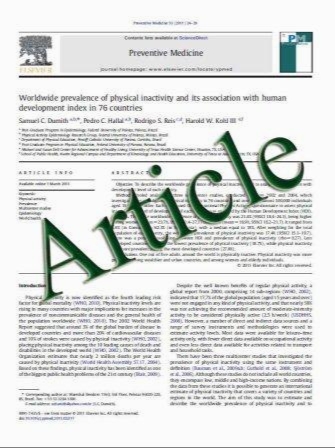Quantitative genetic study of the circulating osteopontin in community-selected families
- نوع فایل : کتاب
- زبان : انگلیسی
- مؤلف : S. Ermakov & A. Leonov & S. Trofimov & I. Malkin & G. Livshits
- چاپ و سال / کشور: 2010
Description
Summary The study assessed contribution of genetic factors to variability of osteopontin (OPN) levels. Evidence of association of OPN levels with polymorphisms in its structural gene and integrin-binding sialoprotein gene loci was obtained. The results motivate research of OPN-related proteins and genes with respect to biomineralization and other biological processes. Introduction OPN is a major phosphoprotein in bone, which plays key role in regulation of bone mineralization process. It is considered as a promising biomarker for osteoarthritis and osteoporosis, and various other pathological conditions. However, the contribution of genetics and other confounding factors to OPN circulating levels variation in general population has never been specifically determined. The main aims of the present study included (1) evaluation of the putative genetic and familial factors’ effect on OPN variability and (2) testing the hypothesis that OPN plasma levels are associated with the genetic polymorphisms in its structural gene locus (SPP1) and in integrin-binding sialoprotein gene locus (IBSP). Methods To address these questions, we used a familybased sample of 925 apparently healthy Caucasian individuals. Association of OPN levels with three SNPs in each of the two selected gene loci was explored using pedigree disequilibrium tests. Results Some 58% and 13% of the OPN levels variability were attributable to genetic factors and common spouse environment, respectively. Three SNPs showed nominally significant association with OPN (p<0.05). Of these, rs2616262 linked to IBSP promoter region remained significant after correction for multiple testing (p=0.003). Significant association of this SNP and rs10516799 (distal segment of SPP1) with OPN was confirmed in several statistical tests. Using a special modification of variance component analysis, we examined gene–gene and gene–sex interaction effects, but found non-significant confirmation for these hypotheses. Conclusions Further studies are required to confirm the observed results and to explore the underlying molecular and physiological mechanisms.
Osteoporos Int (2011) 22:2261–2271 DOI 10.1007/s00198-010-1451-7 Received: 11 July 2010 / Accepted: 24 September 2010 / Published online: 22 October 2010


